got a few more things done tonight.
The electrical set-up works, what about the host? Performance-wise I should go for the empty (brass) C8 pill I still have somewhere, throw it all in and watch the throw if I put it in the Uniquefire T20 with a A123 LiFePo battery. With the 90 degrees output of this led that should match very nicely. But I just don't want the led there, I want to extend my sk68 clone collection, so this will be the host:

The cheapest Banggood coloured clone, they managed again to use less aluminium, even thinner anodising, and the lens came thoroughly pre-scratched. But I must say, where it matters, it is still good: it has the silicone o-ring under the slider, zooming is smoother and it is a bit more waterproof than with the metal ring; although it has a hollow pill, it has a good edge for the led board to sit on; and last but not least, it has a screw-in led-board containment ring, I like that very much.
Now, the sk68-and-clones have a 14mm driver, the 105C is 17mm, so it will not fit in the driver opening. But there is enough room (18mm wide) under the pill before it narrows to AA size, and if i saw a bit off the pil I can let the driver float there, I have done that before.
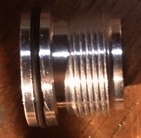
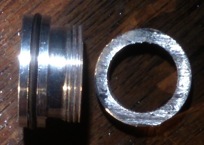
But what about the heat? Normally I would not do anything about it and just wait for the driver to fry or not, but since I post about it here I thought it would be neat to make a driver heat-sink path.
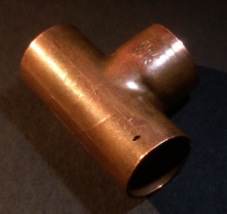
This copper sock is nearly 17mm outer diameter, I used two slices of it for the heatsink. But first I had to shave a corner of two of the 7135 chips to make room for this copper ring (two out of eight chips of the 105C are mounted further to the edge than the rest). Can this be done without damaging the chip? Apparantly, because it did not lower the output current of the driver. I also replaced the short spring of the 105C for a even shorter brass piece:

a lot of sawing, sanding, fitting, soldering and filing later:
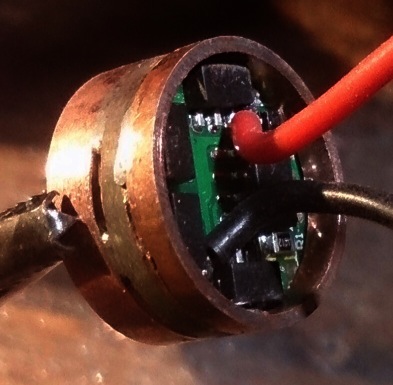
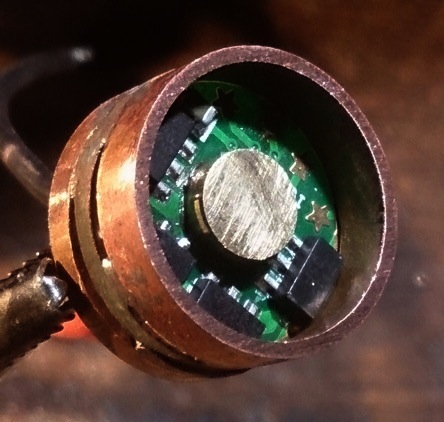
There is a small gap between the rings and the driver because the ring sits on top of the outer connections of the 7135 chips. It is 'tacked' in place by blobs of solder where the chips are (exept one, that I forgot). Had to use a small blowtorch to heat the copper to the melting temperature of the solder, while avoiding aiming the flame directly at the driver. Here is how the driver should fit inside the host, it will be screwed tight between the pill and the battery tube:
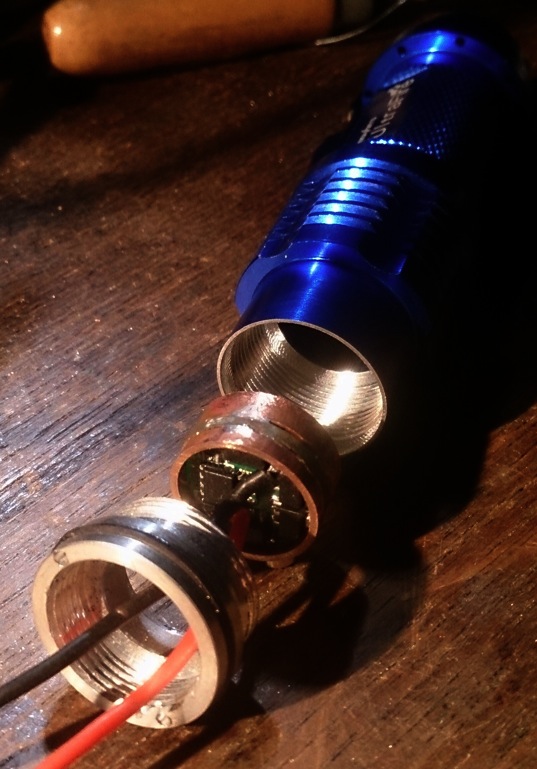
I soldered the wires to the led-board, but now I'm stuck because the Arctic adhesive that I need to glue the led board to the pill (which has to happen without making electrical contact between them, I hope that it will work!) is in the bedroom where my (disused) work bench is but also where my girl-friend is fast asleep at the moment (I need sleep too ).
First option for any progress will be sunday night.
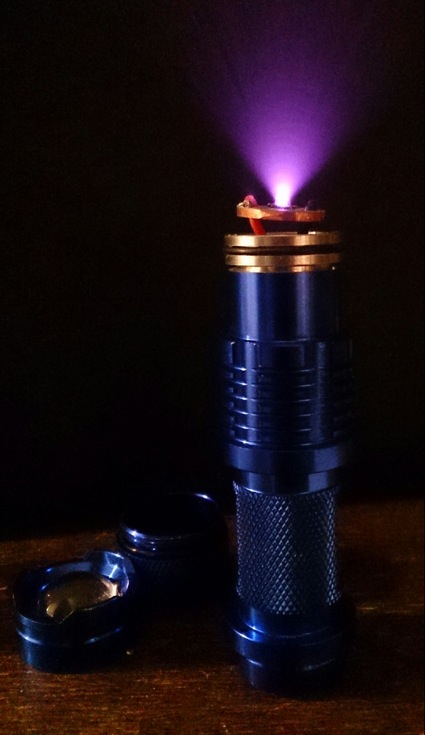

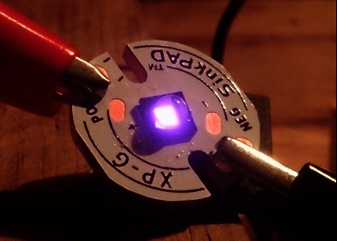

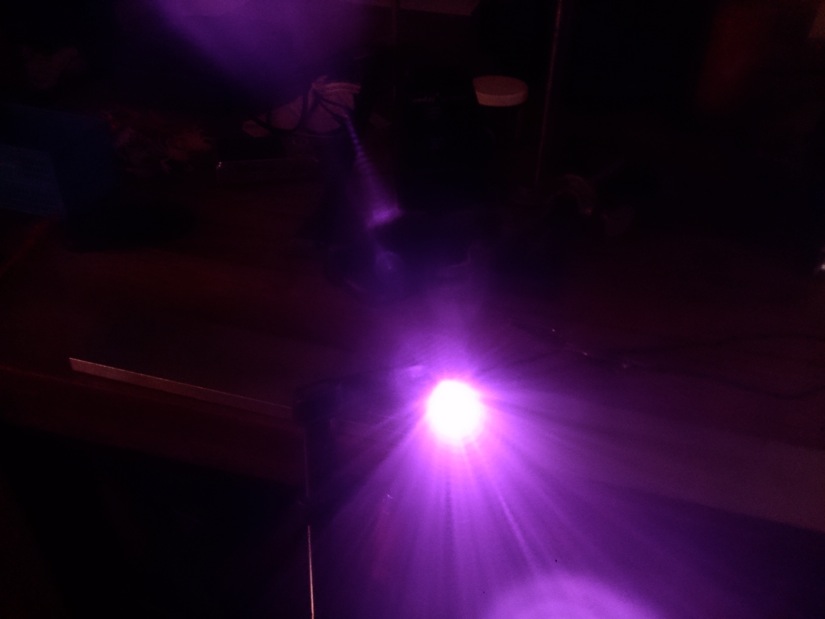





 (I lookedup "zap out" , it is nothing I intended to do to that poor resistor)
(I lookedup "zap out" , it is nothing I intended to do to that poor resistor) .
.







